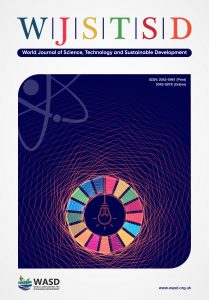Indoor air-quality investigation in code for sustainable homes and passivhaus dwellings: A case study, Grainne McGill, Prof. Lukumon Oyedele and Greg Keeffe
 Grainne McGill, Greg Keeffe
Grainne McGill, Greg Keeffe
School of Planning, Architecture and Civil Engineering
Queen's University Belfast, Belfast
UK
Prof. Lukumon O. Oyedele
Bristol Enterprise, Research and Innovation Centre (BERIC)
University of West of England, Bristol
UK
Email: ayolook2001@yahoo.co.uk
DOI: 10.1108/WJSTSD-08-2014-0021
Purpose: Energy efficient building design strategies are growing in popularity, promoted through increased awareness of climate change, rising energy prices, global consciousness and a demand for energy security. To aid this design process, assessment tools such as Code for Sustainable Homes (CSHs) and Passivhaus were introduced in the UK. However, it is suggested that these tools prioritise energy efficiency over occupant health through a fundamental lack of attention to indoor air quality (IAQ). The purpose of this paper is to investigate IAQ in selected dwellings built using CSHs level 6, level 3 and Passivhaus homes in the UK.
Design/methodology/approach: Using a case study approach, the investigation consisted of IAQ measurements during summer and winter months, occupant diaries and occupant interviews.
Findings: The results from the IAQ measurements show the recommended maximum level of 1,000 ppm was breached in all three Code 6 and two Code 3 homes, with levels slightly below this limit in the two Passivhaus homes. Measurements found high levels of formaldehyde, carbon dioxide and low levels of relative humidity.
Practical implications: There is a need for the adequate consideration of IAQ in sustainable assessment methods, including the use of mandatory credits to ensure occupant health is not disregarded in the drive towards zero carbon.
Originality/value: These results can be used to recognise areas of improvement in the CSHs and Passivhaus standard, and the design of energy efficient homes in general. Research of this nature is essential to ensure occupant health is not sacrificed through the drive towards zero carbon.
Keywords: Public health; Sustainable development; Sustainable environment; Energy efficiency; Passivhaus; Code for sustainable homes; Indoor air quality; Social housing; Zero carbon.
Citation: McGill, G., Oyedele, L.O. and Keeffe, G. (2015), "Indoor air-quality investigation in code for sustainable homes and passivhaus dwellings: A case study ", World Journal of Science, Technology and Sustainable Development, Vol. 12 No. 1, pp. 39-60. https://doi.org/10.1108/WJSTSD-08-2014-0021

